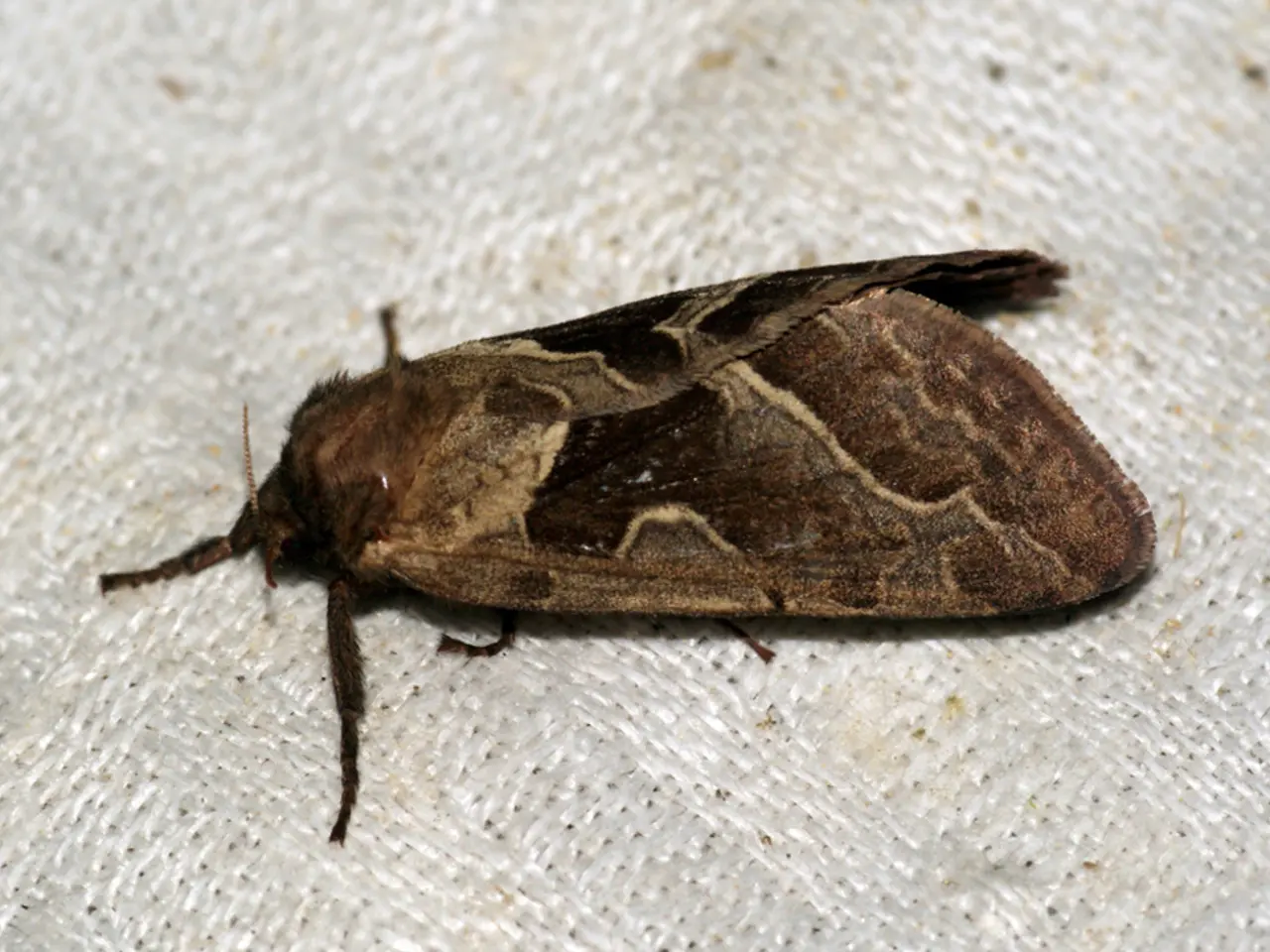Unconventional sources of bullseye-shaped rashes not associated with Lyme disease
Identifying Bullseye Rashes: Lyme Disease vs Allergic Reactions
Understanding the differences between a bullseye rash caused by Lyme disease and one resulting from an allergic reaction to an insect bite is crucial for prompt and effective treatment.
A bullseye-shaped rash linked to Lyme disease (called erythema migrans) typically appears at the site of a tick bite within 3 to 30 days and shows these key features:
- It starts as a red spot that rapidly expands into a pink or red oval or circular rash often having a central clearing, which gives the characteristic "bullseye" appearance.
- It can grow larger than 2.5 inches (6 cm) or bigger.
- Sometimes multiple rashes appear on the body.
- Accompanied often by flu-like symptoms such as fever, headache, fatigue, muscle/joint aches.
- Not everyone with Lyme disease gets this rash; around 70-80% do, but its appearance can vary widely and sometimes lacks the classic bullseye look.
- The tick usually must be attached for more than 24 hours to transmit Lyme disease; prompt tick removal can prevent it.
In contrast, bullseye-shaped rashes caused by allergic reactions to insect bites (including non-Lyme tick bites or other insect bites):
- Are usually localized allergic skin reactions to the insect's saliva or venom, not infectious.
- Tend to cause redness, swelling, itching, and sometimes a central blister or bump, but they do not typically enlarge gradually with central clearing as Lyme rash does.
- Allergic rashes are generally more immediate or acute after the bite and may not persist or expand for days or weeks.
- They usually lack systemic symptoms like fever or fatigue.
Treatment options differ significantly:
| Feature | Bullseye Rash from Lyme Disease | Bullseye-like Rash from Allergic Reaction | |-----------------------------|---------------------------------------------------------|------------------------------------------------------------------| | Cause | Infection with Borrelia burgdorferi spirochete | Hypersensitivity (allergy) to insect saliva or venom | | Rash Characteristics | Expanding red rash with central clearing, can spread | Localized redness, swelling, itching without progressive spread | | Systemic Symptoms | Often present (fever, headache, fatigue, muscle aches) | Usually absent | | Treatment | Antibiotics (e.g., doxycycline, amoxicillin) | Symptomatic: antihistamines, corticosteroid creams, cold compress| | Risk of Complications | If untreated, may lead to arthritis, neurological issues| Generally limited to skin; rare severe allergic reactions |
In summary, Lyme disease rash is infectious, progressively expanding, and often systemic, requiring antibiotic treatment. Allergic rashes are immune responses to insect bites, localized, non-progressive, and treated symptomatically. Early recognition and correct diagnosis are vital to prevent serious Lyme disease complications.
Other causes of a bullseye-shaped rash include ringworm, fixed drug reactions, and allergic reactions to insect bites. Treatment for these conditions varies and should be addressed by a healthcare professional.
[1] Centers for Disease Control and Prevention. (2021). Lyme Disease. Retrieved from https://www.cdc.gov/lyme/ [2] American Academy of Dermatology. (2021). Lyme Disease Rash. Retrieved from https://www.aad.org/public/diseases/lyme-disease/symptoms/rash [3] Mayo Clinic. (2021). Lyme Disease. Retrieved from https://www.mayoclinic.org/diseases-conditions/lyme-disease/symptoms-causes/syc-20351630 [4] American Academy of Dermatology. (2021). Hives. Retrieved from https://www.aad.org/public/diseases/eczema/hives [5] National Institute of Allergy and Infectious Diseases. (2021). Lyme Disease. Retrieved from https://www.niaid.nih.gov/diseases-conditions/lyme-disease
- HIV, a viral infection affecting the immune system, is not associated with bullseye rashes.
- A rash concerning depression might not be physical, but could manifest emotionally as low self-esteem or feelings of guilt.
- Ankylosing spondylitis, a type of arthritis causing inflammation in the spine, does not typically present with bullseye-shaped rashes; its primary symptoms include chronic back pain and stiffness.
- AQ, or autism spectrum quotient, is a measure of one's inclination towards autistic traits and does not relate to skin conditions or rashes.
- Skin conditions beyond bullseye rashes include psoriasis, a chronic inflammatory disease causing red, scaly patches on the skin.
- Antihistamines are medications that help reduce symptoms of allergic reactions, like itching or swelling, but are not effective against fungal infections of the skin like athlete's foot.
- Psoriasis is a chronic, autoimmune skin condition, not linked to stress, although it can be exacerbated by emotional or physical stress.
- Fungal infections of the skin, such as ringworm, can cause a ring-shaped rash, but the bullseye appearance is distinctive from that of Lyme disease.
- Predictive models in science, like those for certain medical-conditions, can help forecast the progression or potential complications of Lyme disease but are not applicable to eye-health, hearing, health-and-wellness, mental-health, or neurological-disorders.
- Spondylitis, an inflammatory condition affecting the spine, can lead to chronic pain, but it's not associated with a bullseye rash or lung cancer.
- COPD, or chronic obstructive pulmonary disease, is a lung condition characterized by breathing difficulties and coughing, not rashes.
- Lyme disease is transmitted through tick bites, unlike cancer or Lyme disease itself, which are not contagious via tick bites.
- Lymes disease, a tick-borne disease, is distinguishable from other medical-conditions such as skin-care issues or hearing problems by its specific bullseye rash and associated systemic symptoms.




